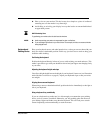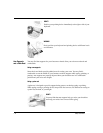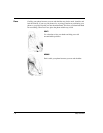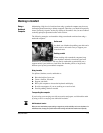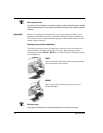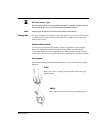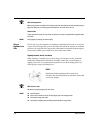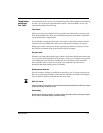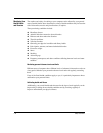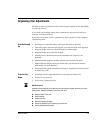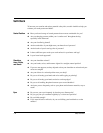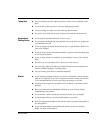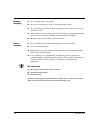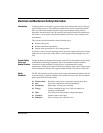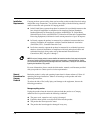
Safety and Comfort 1-21
Taking Breaks
and Varying
Your Tasks
As noted earlier in this section, your furniture placement, office equipment, and lighting
are only a few of the factors that determine comfort. Your work habits are also very
important. Remember the following:
Take breaks
When you work at your computer for long periods, take short breaks at least once per
hour and preferably more often. You may find that frequent, short breaks will benefit
you more than fewer, longer breaks.
If you find that you forget to take breaks, use a timer or specialized software. Several
software tools are available that remind you to take breaks at intervals you specify.
During your breaks, stand up and stretch, especially any muscles and joints you may
have held in an extended static posture while using the computer.
Vary your tasks
Examine your work habits and the types of tasks you perform. Break up the routine and
try to vary your tasks during the day. By doing so, you may avoid sitting in one position
or performing the same activities continuously for several hours using your hands,
arms, shoulders, neck, or back. For example, you could print out your work to
proofread rather than proofing from your monitor.
Reduce sources of stress
Take an inventory of things at work that are stressful to you. If you perceive that your
physical or psychological health is being affected, take time to evaluate what changes
you can make to reduce or eliminate the sources of stress.
J
JJ
J
HINT: Try it and see
Contrary to what some may believe, several studies have found that productivity does NOT decline when
frequent short breaks are added to the day.
Breathe deeply
Breathe fresh air deeply and regularly. The intense mental concentration that may accompany computer
use may tend to cause breath-holding or shallow breathing.



